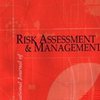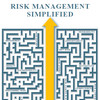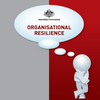 A word of warning: This is not your typical journal article on supply chain risk. Risks and supply chains by Charles Tapiero and Alberto Grando starts out as an easy read, reviewing the literature and discussing the risk sources and risk consequences we all know by now, but it ends in an inconclusive and unsurmountable stack of equations not suited for the stochastically uninitiated researcher like me. Nonetheless, the arguments leading up to the equations are definitely worth reflecting on. In particular, the difference between external risks and risk externalities are worth noting.
A word of warning: This is not your typical journal article on supply chain risk. Risks and supply chains by Charles Tapiero and Alberto Grando starts out as an easy read, reviewing the literature and discussing the risk sources and risk consequences we all know by now, but it ends in an inconclusive and unsurmountable stack of equations not suited for the stochastically uninitiated researcher like me. Nonetheless, the arguments leading up to the equations are definitely worth reflecting on. In particular, the difference between external risks and risk externalities are worth noting.
Charles Tapiero
Maybe I should have known better, but the name Charles Tapiero (or Alberto Grando for that matter) didn’t ring a bell with me, so little did I know when I started reading this paper that it was written by he who is the editor for Finance in the Journal of Applied Stochastic Models for Business and Industry and who has published 12 books and more than 250 papers on risk management and stochastic modelling in operations, insurance and finance (Next time I will take more care and actually read the biographical notes before reading the paper). Not only did the name not ring a bell, but a a cursory glance at the references had me think – and please forgive me for this, Charles – what would he possibly know about supply chain risk, considering his obvious omissions of some of the more seminal literature on supply chain risk? However, supply chain risk is not what is at the heart of this article, it is risk itself, and risk modelling, that is certainly what Charles Tapiero knows very much about.
Risks
The authors define risk as following:
Risk concerns the direct and indirect adverse consequences of outcomes and events that were not accounted for, that were ill-managed or ill-prepared for, and concerns their effects on individual clients, customer firms, or society at large.
That is a definition of risk that looks at events and consequences (as a risk analysis should), but it appears to stop short of evaluating the vulnerabilities, that is the possible survivability or non-survivability when faced with the consequences, as I elaborated upon in apost last week. Nonetheless, the risk definition by Tapiero and Grando encompasses the full scope of what can happen, not just internally, but also externally to the supply chain.
The authors stress that risks need to be measured and valued to actually count as risks.
In the supply chain, the unit of exchange is essentially money and therefore, risk ought, ultimately, to be measure-valued by money (as it is practiced in finance, where a risk premium is used).
It is only by associating risks with money that risks can be internalised in the cost and benefit calculations that firms use for decision-making. So they say.
Conversely, in my philosophical essay on transportation reliability – a question of cost and benefit, I argue that decisions should not be determined by numbers alone
Decisions should be fully envisioned and comprehended by the decision makers. This is only possible by speculating with images what the outcome of the decision will be.
That is why I, leaning on the 16th century Italian philosopher Giordano Bruno, prefer my own research to be rich in images, but poor in formulas.
Four categories of risk
The authors see risks as related to four categories:
- Operational risks
- External risks
- Strategic risks
- Risk externalities
Interestingly, risks are not only seen as an inward threat that acts towards or upon the supply chain, but also as an outward threat that emanates from the supply chain towards the external environment. That is what creates the risk externalities.
Operational risks arise as the direct and indirect adverse consequences of events related to operations and services that are not performing as expected. Operational risks can arise within the firm or the supply chain, and may have external as well as strategic and externality effects.
External risks arise from external events that firms and the supply chain have little influence over, e.g. weather hazards and financial markets. Globalization is such an external risk, in the sense that it is both an opportunity and a risk. It is an opening into new markets, but it also carries risks, particularly when it comes to the cultural differences in business practices and attitudes towards risk. Globalization can also open a so far protected market (home turf) to the risks of global competition.
Strategic risks arise when enterprises exchange with other firms whose motivations may differ, and stem primarily from information asymmetry resulting in adverse selection or moral hazard. Risk is thus a function of the relationship between the parties involved in a business transaction. Moral hazard implies that private (“inside”) information held by one of the parties can induce risk, if (ab)used.
Risk externalities are costs or benefits that are experienced by someone not party to the transaction that produced the risk. The authors mention pollution resulting from manufacturing as an example. Externalities also introduce social costs, social costs that are either born by society (at no risk for the risk-generating party) or shared by society and the firm, say, if said pollution induces a legal or ethical responsibility.
Critique
What puzzles me is the abrupt ending of the article, seemingly completely void of any conclusion. After introducing, describing and discussing the risk categories at length in an excellent manner, the article presents two selected cases and problems, and as I said before, I am not in a position to discuss the stochastic modelling involved here. It then ends with an almost one-page long quote from the AON white paper on Protecting Supply Chains Against Political Risks, citing tight timeframes, customs designs, one supplier and no geographic diversification as risks. I must admit that I have some trouble relating this “conclusion” with the aforementioned cases, or for that matter, the discussion on the different categories of risk. That said, the abstract has it right in so far:
The purpose of this paper is to consider the following risks: risk externalities, external risks, operational risks and strategic risks. Further, we emphasize a measurement approach to risk in supply chains and the motivation of supply chain managers in setting managerial and operational priorities.
That this paper does to the full.
Conclusion
In this article risks are seen as inherently negative. While entering risk as an opportunity for growth is mentioned, risk is still seen as something unwanted and distinctively adverse and malevolent. As to risk valuation, personally, I do not subscribe to the extreme monetary orientation I feel this article represents. While it does make sense to evaluate risks in terms of costs and benefits, sometimes there are risks that you may be willing to take (or not willing to take) regardless of the benefits or costs involved, simply for the sake of ethical or corporate social responsibility. My belief is that these externalities will only become more important in the future.
Reference
Tapiero, C., & Grando, A. (2008). Risks and supply chains International Journal of Risk Assessment and Management, 9 (3) DOI: 10.1504/IJRAM.2008.019740
Author links
- poly.edu: Charles Tapiero
- unibocconi.it: Alberto Grando
Related
- husdal.com: Risk in supply networks
- husdal.com: Risk and vulnerability












